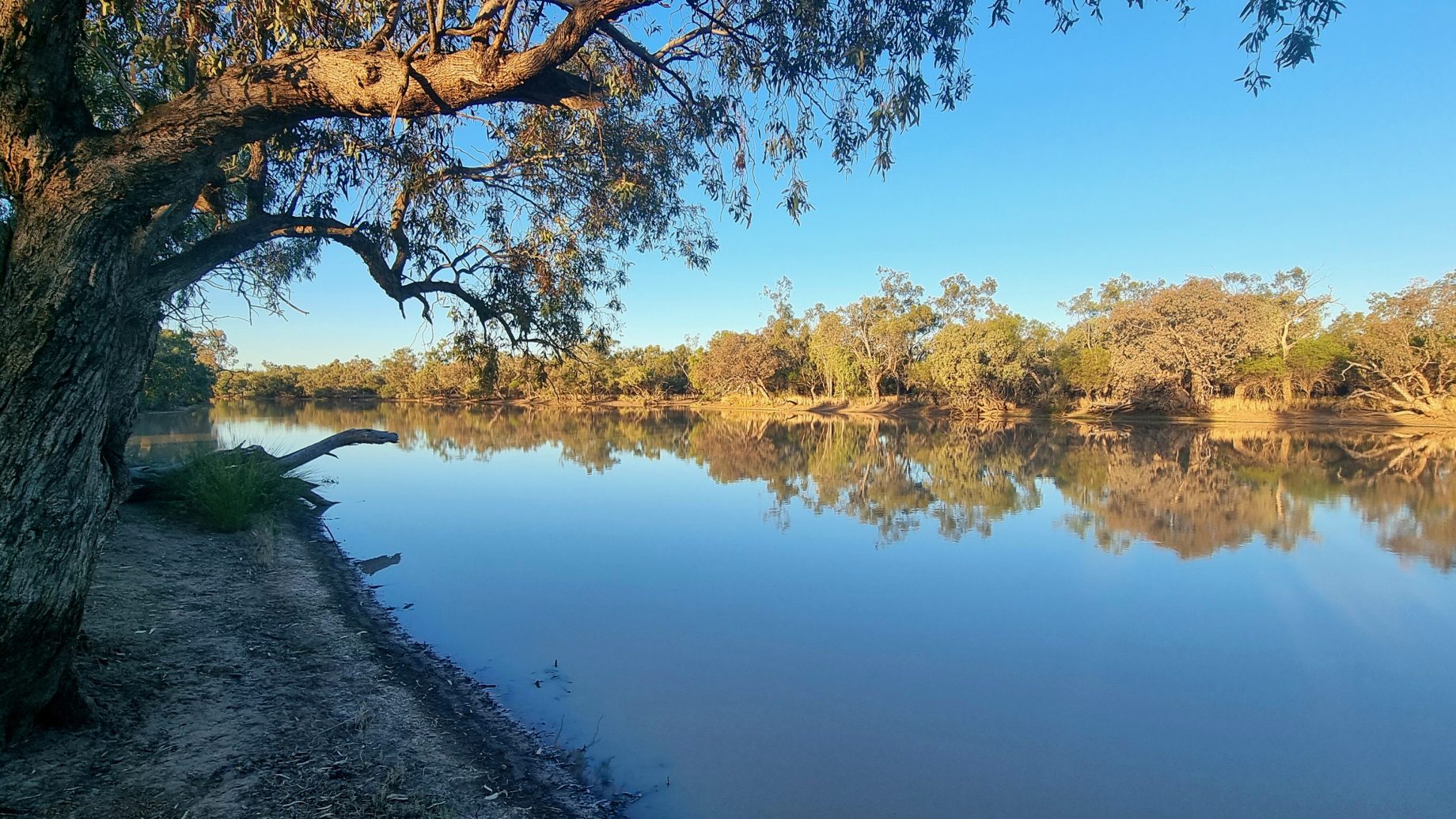Today, finally, there has been some respite from the winter heatwave that has swept across Central Australia (Birdsville recorded its hottest winter’s day on record yesterday, with a top of 38.4C; in the scheme of things Birdsville was close by and we endured a 36C day when we arrived in Thargomindah).
Today the temperature peaked at 26C which is the norm for winter and we were relieved. More heat is forecast but we hope to chase cooler weather as we continue south. Our journey today was relatively short, at just over 200kms. Wildflowers were in full bloom after recent rains with ground covers, bushes and trees all displaying spring flowers. We arrived in Hungerford not long after midday and parked opposite the historic Royal Mail Hotel. Coffee and tea (none of that fancy stuff – just instant coffee and a tea bag) were ordered at the bar, then we browsed the memorabilia on display throughout the building. We were particularly amused by one sign that read:
“We do not have a single mosquito in Hungerford. They are all married with large families.”
This pub had played host to Henry Lawson for a few weeks, back in the midst of the district’s worst drought on record in 1892. Lawson walked from Bourke to Hungerford over three weeks, gathering an insight into the hardships suffered by those on the land. It resulted in an amusing short story titled “Hungerford”.
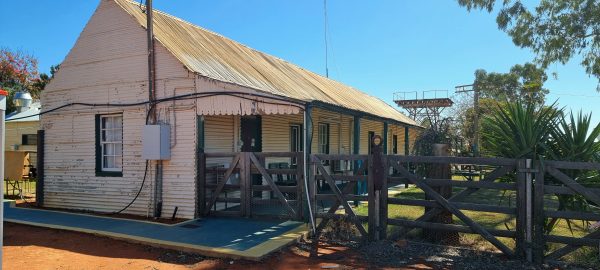


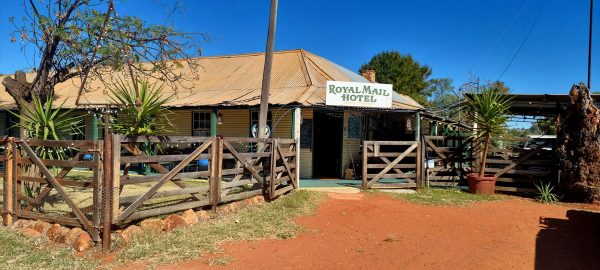
It was a short, 100-metre walk from the pub to a large gate in the dingo-proof fence that has one end on the Eyre Peninsula in South Australia and the other around Dalby in Queensland. It was originally built as a rabbit-proof fence but, as Lawson noted, “there were equal numbers of rabbits on both sides of the fence” so it wasn’t a great success. Eventually the fence was upgraded and repurposed as a dingo-proof one.

We then backtracked slightly and drove north from Hungerford into the Currawinya National Park where we found a great campsite on the banks of the Paroo River – the last free-flowing river in the entire Murray-Darling basin. Currawinya, a former sheep station, has an extensive network of lakes and waterways supporting an enormous number of birds so it is a declared RAMSAR area of significance. It is also a very large national park!

After setting up camp we drove over to “The Granites” which, as the name proclaims, is a series of granite outcrops not dissimilar to the Devil’s Marbles in the Northern Territory. The granite rock formation extends deep underground, piercing the artesian basin and allowing artesian waters to make it through to the surface – similar to the mound springs we encountered along the Oodnadatta Track.



There are two major lakes within the park. Lake Numalla has fresh water while the other, Lake Wyara, is saline – even though they are only separated by about 5 kms. The brackish Lake Wyara is clear, allowing sunlight to reach down into the water and encourage the growth of plants that support fish, turtles, frogs and insects. The freshwater lake is heavy with silt and supports different wildlife as a result. We visited both lakes at the end of a 32km drive while passing a number of grazing kangaroos around the fringe of smaller, ephemeral lakes.



On the return to our campsite we stopped at the shearing shed and shearers’ quarters that are part of Currawinya’s history that predates the establishment of the national park. The last herd of sheep were sheared in 1991 before the owners relinquished their lease and the national parks body took control of the land. The lanolin sticking to our shoes as we walked across the old floorboards was an obvious reminder of the number of sheep that would have passed through the shed over the years.
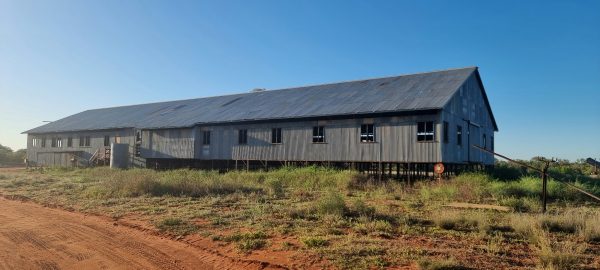


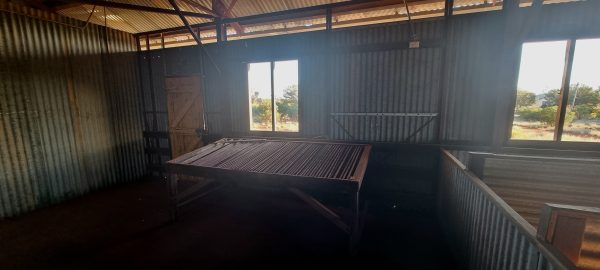

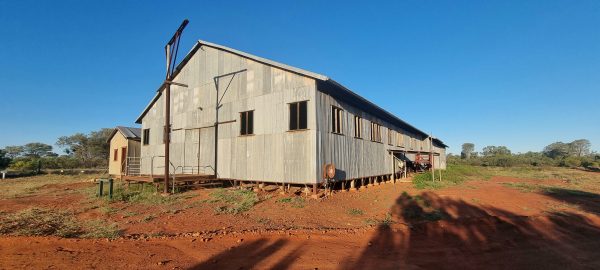
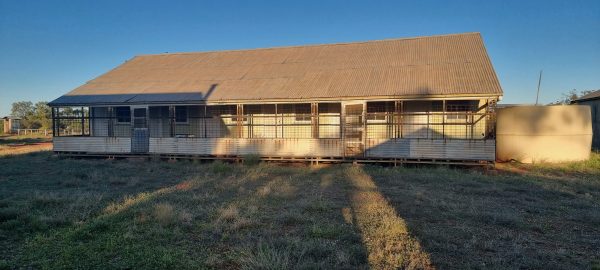
An important breeding program is underway within the park. A feral-proof fence has been erected around 25 square kilometres, and bilbys have been reintroduced into country they are best suited to (before foxes and feral cats moved into the area). The bilby fence is not accessible to visitors, and as the park covers 334,000 hectares you’d be hard pressed to find it.
Dinner tonight was enjoyed looking across the Paroo River as a pair of royal spoonbills fossicked in the shallows opposite, looking for something to eat.
